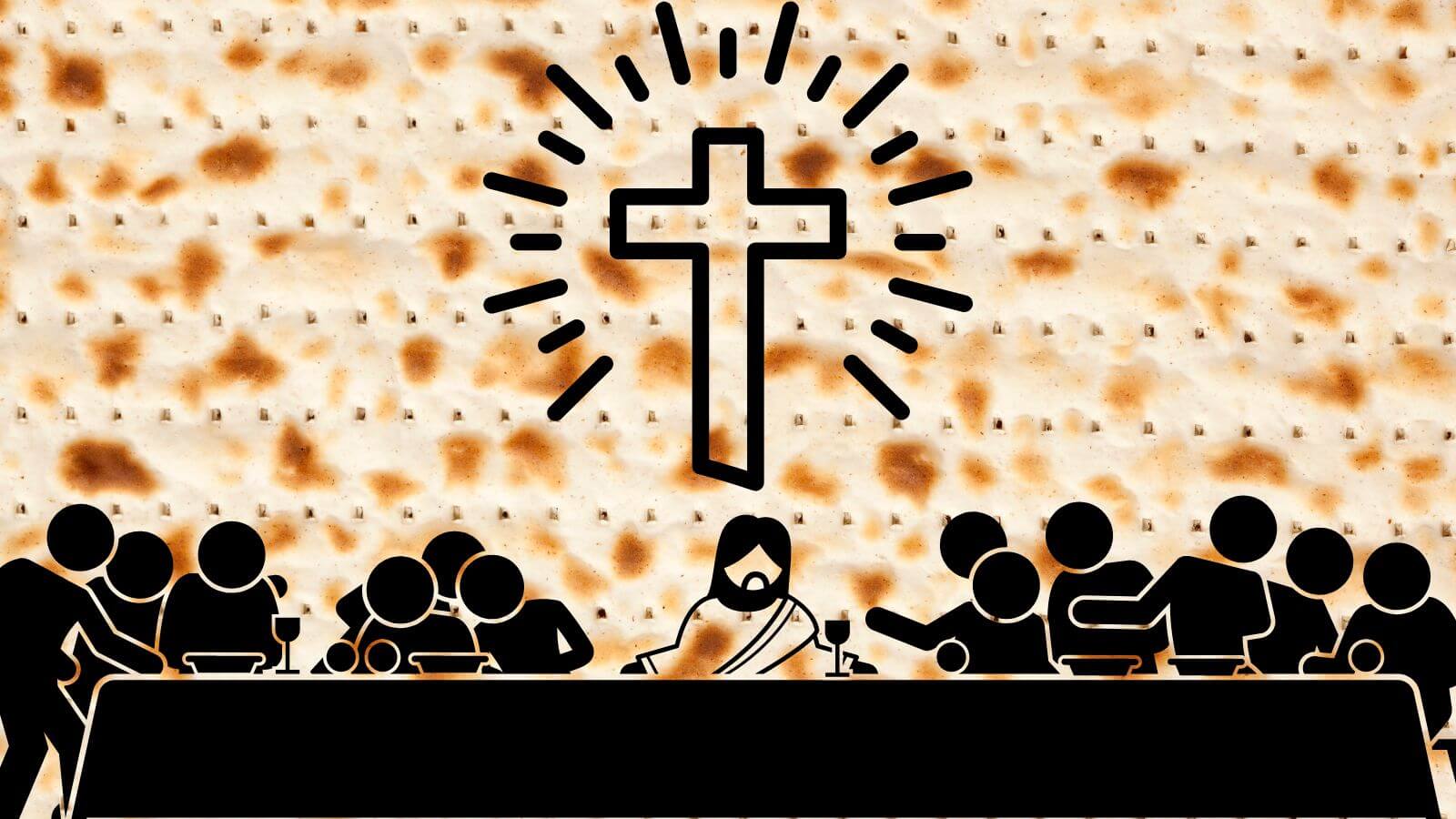Why some Christians use matzo for Communion — yes, really
One church-supply website even offered ‘Streit’s Communion Bread’

Graphic by Mira Fox
In the Jewish world, matzo is usually eaten exclusively during Passover.
But some Christians eat the dense cracker all year — every Sunday, for Communion.
The news may come as a surprise to some Jews. But given the history of Christian affinity for various elements of the Seder, it’s no great leap to use matzo as an element of Christian ritual observance.
The Last Supper is understood to have been a Passover meal, and certain churches have long held Seders, usually with the goal of forging connections to Jesus’ time and ways.
Many who conduct Christian Seders reinterpret the Jewish symbols on the Seder table through a Christian lens — for instance, using paschal lamb to represent Jesus — a practice many Jews find appropriative and harmful. (It’s also not historically accurate; while the Last Supper was a Passover meal, the Seder as we practice it today was not conducted in Jesus’ time.)
The practice of using matzo for Communion is deeply connected to the Passover element of the Last Supper. In the Gospels of Matthew, Mark and Luke, during the Last Supper, Jesus breaks some bread — presumably unleavened — and tells his disciples to eat it because it is, he says, his body. He also offers them wine as the blood of the covenant.
Together, bread and wine make up Communion. In many churches, people consume the bread and wine, believing them to be either symbolically or literally the blood and body of Jesus.
The standard Communion wafers used by most Catholic churches are unleavened, and subject to some of the same regulations as matzo: their short list of ingredients is exactly the same.
Not all Christians find matzo to be an appropriate vessel for the body of Christ. The Catholic Church has strict regulations about what can and can’t be used for Communion: The go-to form is a white, thin wafer without the brown speckling or perforations of matzo.
But other congregations, including the Church of Christ, Baptist churches and Assembly of God churches, use matzo.
For those who use matzo as part of Communion, the symbolism goes beyond the presumed use of it during the Last Supper. Like the matzo, one Christian blogger wrote, Jesus “was broken, striped and pierced.”
If you search for matzo online, in addition to the expected Passover listings, you find plenty of it on church supply websites like ConcordiaSupply.com, where a box of Manischewitz is classified under “Communion bread.” The Bible House Supply site simply calls a box of matzo “Streit’s Communion bread,” as though that’s how Streit’s itself brands the product. The image, meanwhile, clearly shows a classic box labeled “Streit’s Matzos.”
In the description, Bible House Supply writes: “This was the bread that Jesus used when He instituted the Lord’s Supper.”
There are even matzo listings on Walmart and Amazon that reference Communion usage. (Both Amazon and Walmart also have listings for matzo that mention Passover without Communion.)
In a 2006 interview with American Jewish Life Magazine, Alan Adler, the great-grandson of Streit’s founder Aron Streit, said that he routinely receives emails from Christians looking for “bible bread.”
But it’s not a big market. In that same article, Dennis Kelly, president of Bible House, said that just five boxes can last a church for six months, since pieces of matzo are broken into tiny bites to be distributed through the congregation.
And most congregations are happy to make do with matzo that isn’t kosher for Passover, a year-round commodity that is far easier to make since it doesn’t require rabbinic oversight. And kosher-for-Passover matzo requires strict procedures, including that it must be fully baked within 18 minutes of the water touching the flour.
Perhaps, like with Christian Seders, a desire for some purified, ancient version of Christianity drives some congregations toward Communion matzo. But they also might have a simple motivation: taste. While most of us aren’t too impressed with the cardboard flavor and texture of matzo, I hear that Communion wafers are even worse.















